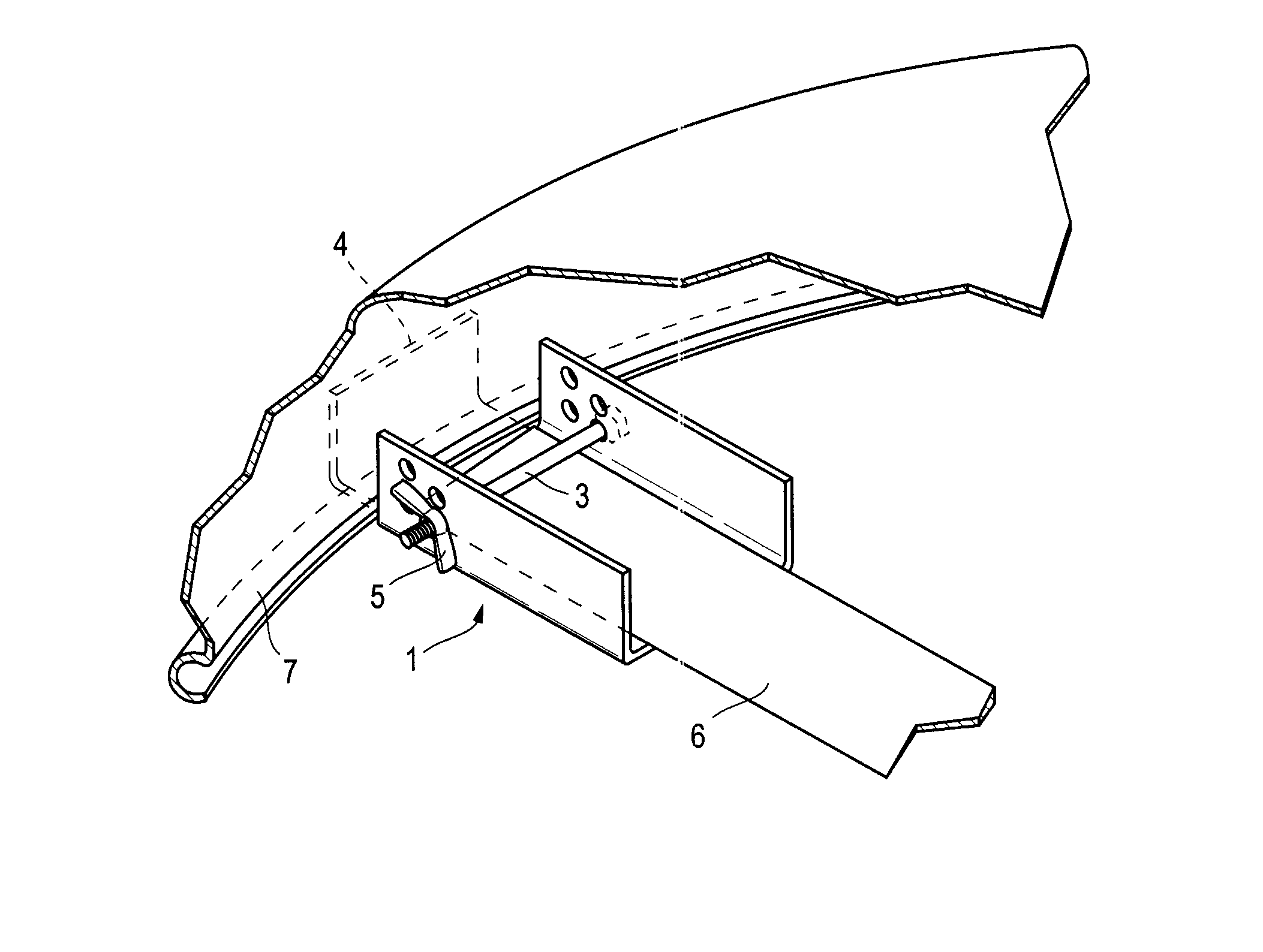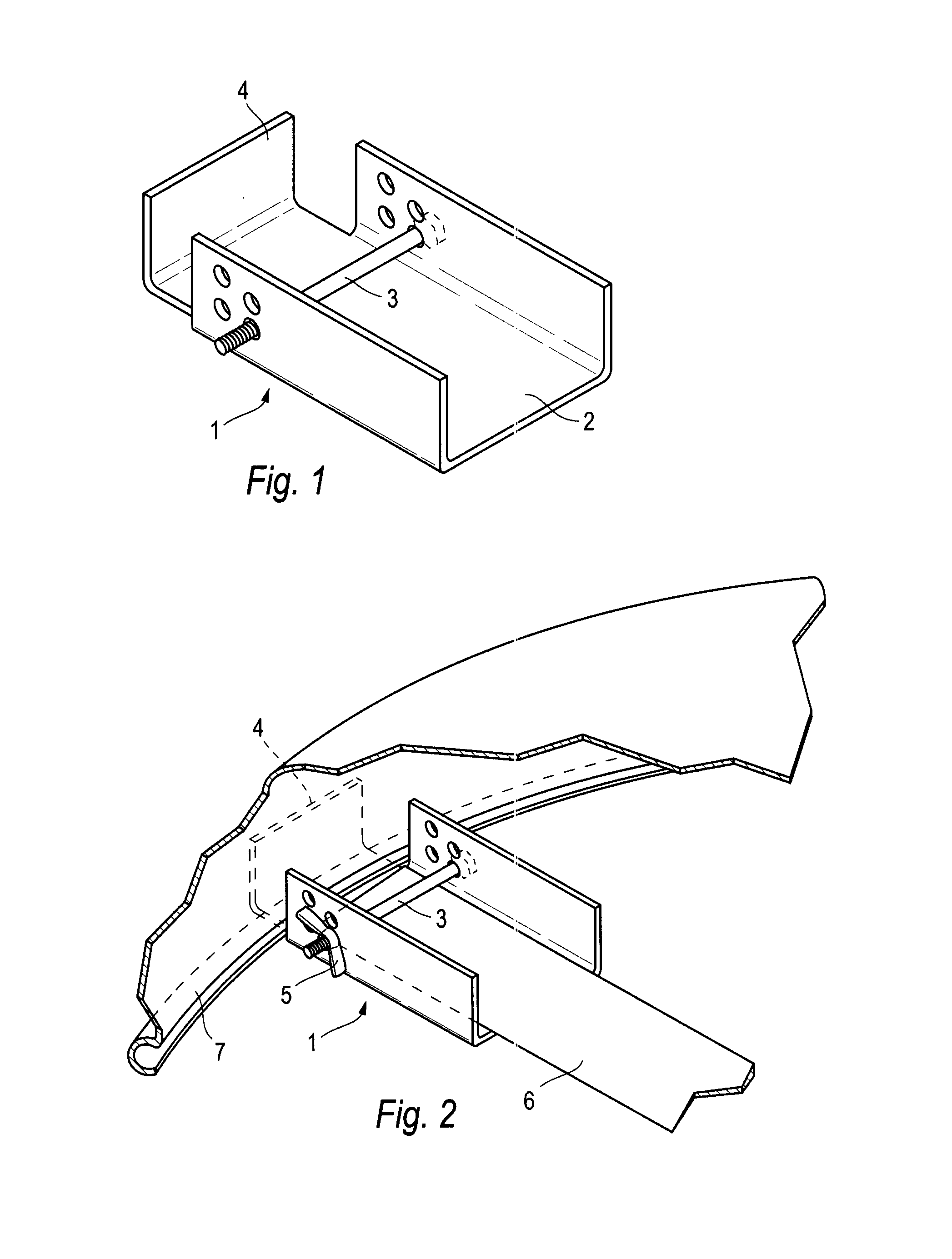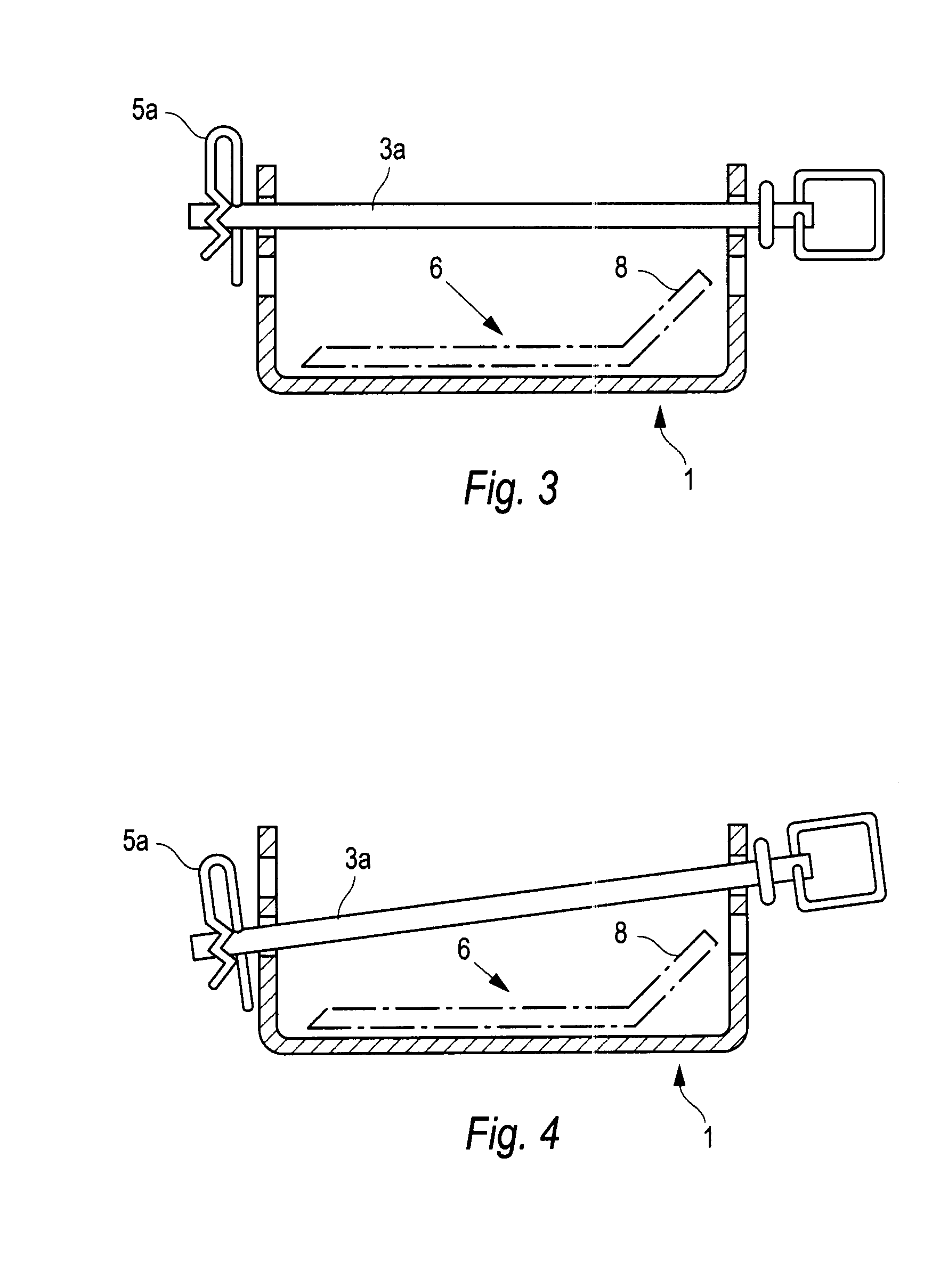Rotary mower blade removal and reinstallation device
a rotary mower and blade technology, applied in the field of lawn mower blade removal and installation, can solve the problems of not being able to install the device over the blade, not being able to work with the mulching mower or the multiple-blade mulching mower deck, and rendering it cost-prohibitive to potential users, so as to minimize the cost of fabrication
- Summary
- Abstract
- Description
- Claims
- Application Information
AI Technical Summary
Benefits of technology
Problems solved by technology
Method used
Image
Examples
Embodiment Construction
[0042]This device is constructed of steel or aluminum or composite or any other material sufficiently strong. It can be constructed of one piece of material formed by stamping bending or any similar method. It can also be constructed of pre-formed rectangular tubing with one side removed and the exterior restriction leg formed by bending. It can also be constructed of multiple angles cut to size and attached together such as by welding. It can also be constructed by casting in a mold. It can be retained on the blade solely by holding with one hand. Alternately, it can be retained on the blade with any of a number of pinning devices ranging from a toggle pin to a bolt to a bolt and nut to a pin with retaining clip. It can also be retained by a secondary “C” shaped retainer (18) which is slid over the device's open side (FIG. 9). For embodiments utilizing a pinning method, the device may have holes drilled, molded or punched completely through said tubing to allow a pin or shaft 3 (FI...
PUM
| Property | Measurement | Unit |
|---|---|---|
| torque | aaaaa | aaaaa |
| gravity | aaaaa | aaaaa |
| pressure | aaaaa | aaaaa |
Abstract
Description
Claims
Application Information
 Login to View More
Login to View More - R&D
- Intellectual Property
- Life Sciences
- Materials
- Tech Scout
- Unparalleled Data Quality
- Higher Quality Content
- 60% Fewer Hallucinations
Browse by: Latest US Patents, China's latest patents, Technical Efficacy Thesaurus, Application Domain, Technology Topic, Popular Technical Reports.
© 2025 PatSnap. All rights reserved.Legal|Privacy policy|Modern Slavery Act Transparency Statement|Sitemap|About US| Contact US: help@patsnap.com



